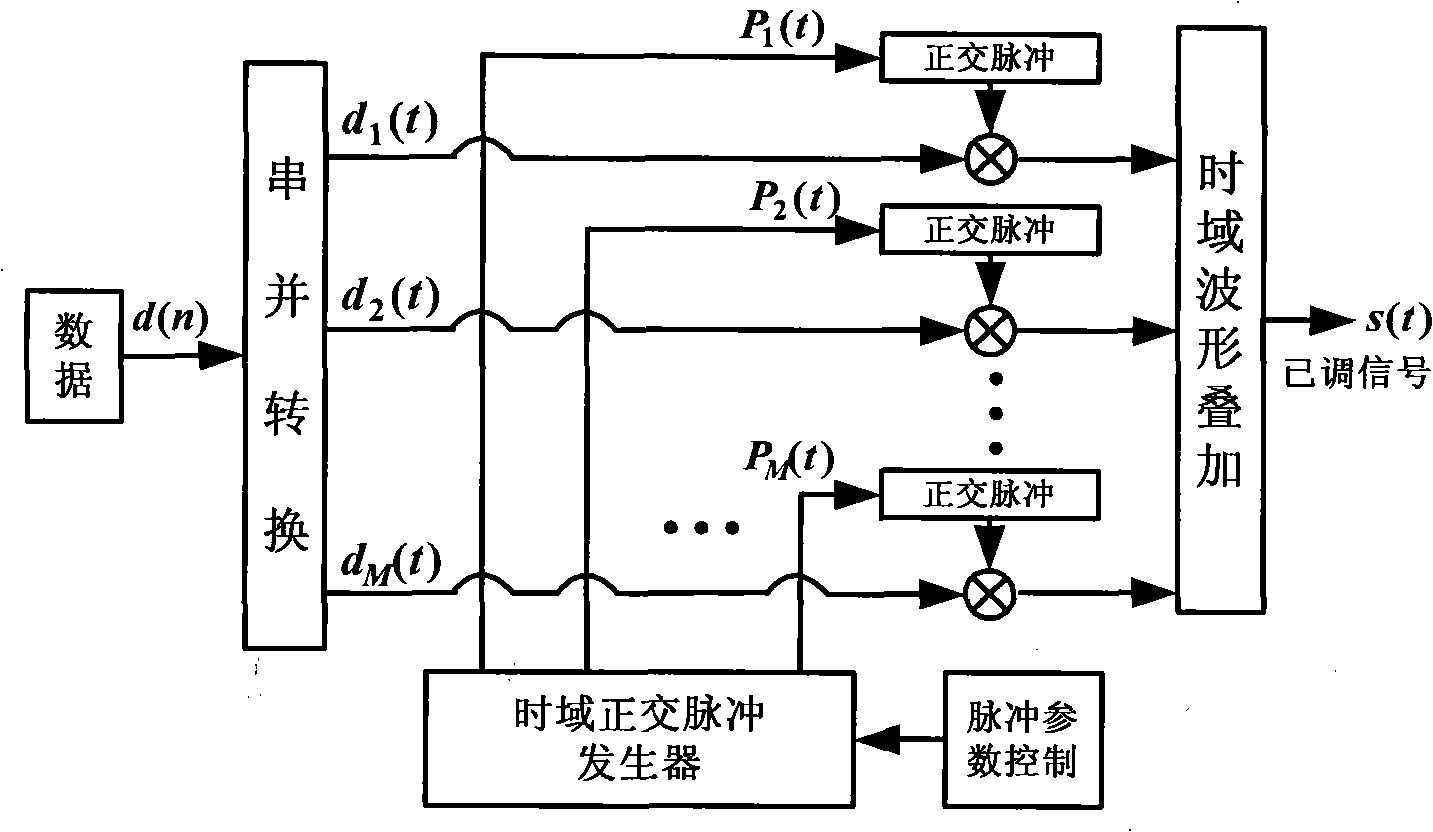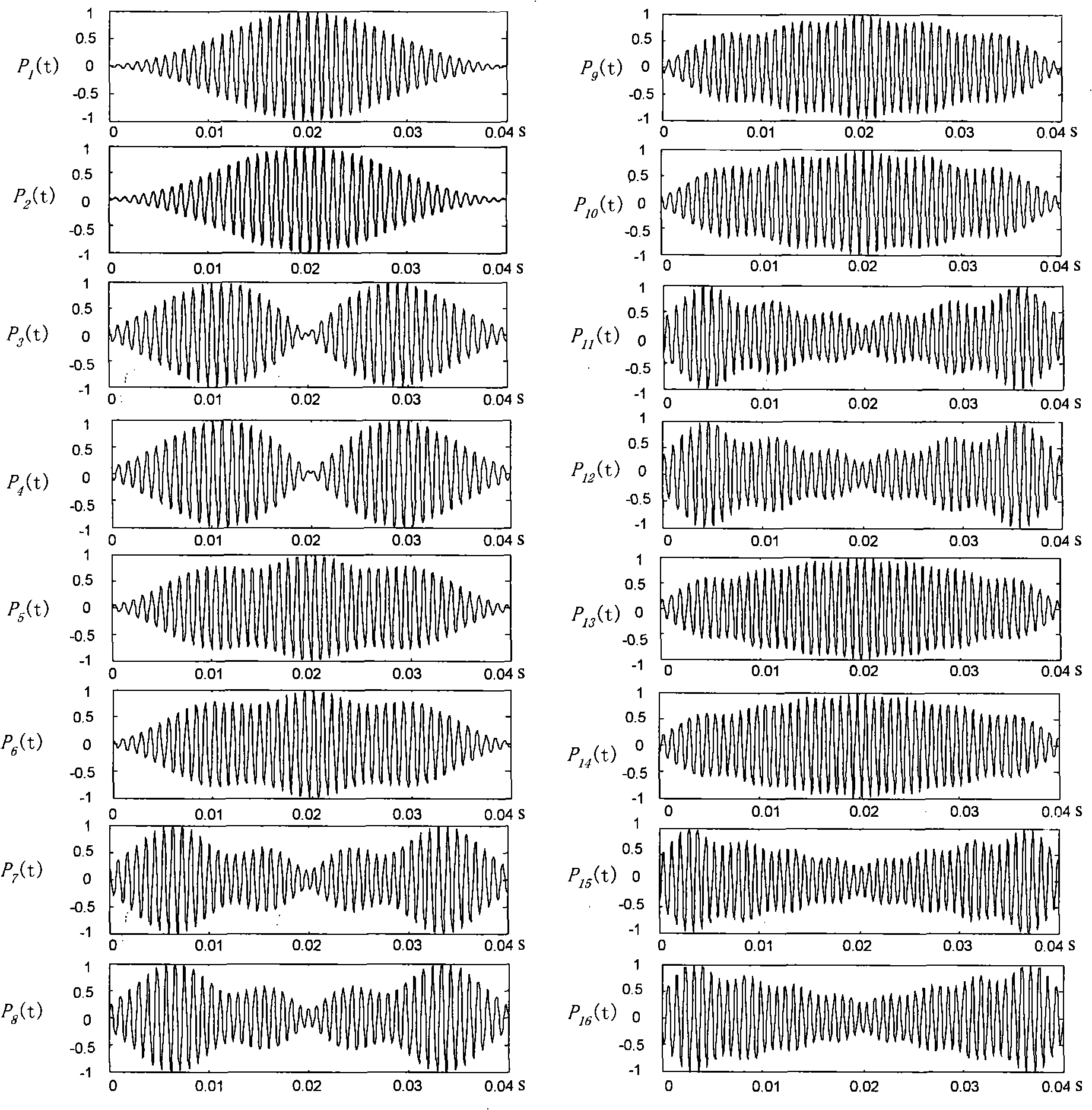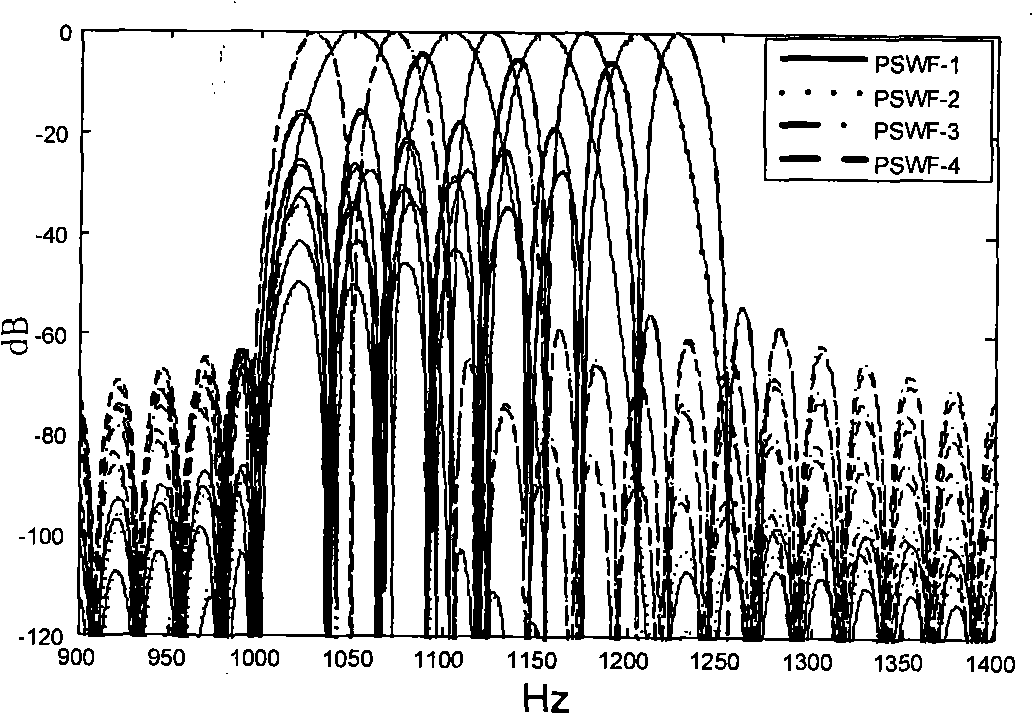Non-sine time-domain quadrature modulation method
A modulation method, non-sine wave technology, applied in the modulation carrier system, digital transmission system, electrical components, etc., can solve the problem that the modulation signal cannot meet the radio spectrum management, cannot form a small relative bandwidth signal, and can only be used in the baseband transmission system and other issues, to achieve the effect of small relative bandwidth or narrowband communication, good power utilization, and avoiding distortion
- Summary
- Abstract
- Description
- Claims
- Application Information
AI Technical Summary
Problems solved by technology
Method used
Image
Examples
Embodiment 1
[0036] Design requirements: in the frequency range of 1000Hz ~ 1250Hz, to achieve a communication rate of 400baud transmission.
[0037] Design analysis: According to the design requirements, the system transmission bandwidth is 250Hz, and the center frequency is 1125Hz. Through calculation, it can be known that the frequency band utilization rate of the transmission system is 1.6baud / Hz, and the relative bandwidth is 11%, which means that a large relative bandwidth signal design is required. With the present invention, the time-domain orthogonal pulse group adopts the PSWF pulse group, and the specific implementation process is as follows:
[0038] ①Time domain orthogonal PSWF pulse group parameter setting
[0039] Under the conditions of system bandwidth B=250Hz and system frequency band utilization rate η=1.6baud / Hz, when the number of orthogonal pulses is M=16, according to the relationship: M BT s = ...
Embodiment 2
[0055] Design requirements: move the frequency spectrum of the modulation signal shown in the first embodiment to the frequency band of 200kHz-200.25kHz.
[0056] Design analysis: The transmission bandwidth of the system remains unchanged at 250Hz, but the relative bandwidth becomes 0.06% at this time, that is, a small relative bandwidth signal design is required. The specific implementation process is as follows:
[0057] In the system bandwidth B, the system frequency band utilization η, the number of orthogonal pulses M, and the pulse duration T s Under the premise of unchanged, adjust the upper and lower limit parameters of the frequency domain of the j pulse group so that f L =200kHz, f H =200.25kHz, construct a new time-domain orthogonal PSWF pulse group according to the time-domain orthogonal PSWF pulse group construction method described in step ② of the first embodiment, and complete the information modulation according to the steps ③, ④, and ⑤ of the first embodiment. Th...
Embodiment 3
[0059] Design requirements: on the premise of keeping the system frequency band utilization rate unchanged, with 200.125kHz as the center, the frequency spectrum of the modulated signal shown in the second embodiment is expanded twice.
[0060] Design analysis: When the system frequency band utilization rate η=1.6baud / Hz does not change, if the spectrum is expanded twice, the total transmission capacity will also increase by two times, that is, the transmission rate is 800baud. The specific implementation process is as follows:
[0061] Adjust the upper and lower limit parameters of the frequency domain of the pulse group to make f L =199.875kHz, f H =200.375kHz, the system bandwidth is B=500Hz, and the number of quadrature pulses is still M=16, according to the relationship: M / BT S =η, the pulse duration should be T s = 20ms. The parameter settings of the time-domain orthogonal PSWF pulse group are shown in Table 2.
[0062] Table 2 Time domain orthogonal PSWF pulse group paramet...
PUM
 Login to View More
Login to View More Abstract
Description
Claims
Application Information
 Login to View More
Login to View More - R&D
- Intellectual Property
- Life Sciences
- Materials
- Tech Scout
- Unparalleled Data Quality
- Higher Quality Content
- 60% Fewer Hallucinations
Browse by: Latest US Patents, China's latest patents, Technical Efficacy Thesaurus, Application Domain, Technology Topic, Popular Technical Reports.
© 2025 PatSnap. All rights reserved.Legal|Privacy policy|Modern Slavery Act Transparency Statement|Sitemap|About US| Contact US: help@patsnap.com



